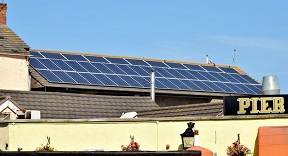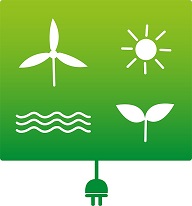Optimistic messages on renewable energy abound. According to a major scientific article, ‘a greener, healthier, and safer global energy system is also likely to be cheaper’. Much cheaper. But official policies and official forecasts still stay on the ‘safe side’. They either state or imply that the revolutionary growth of renewable energy will soon grind to a halt. Cannot we afford anymore to be openly optimistic about the future?

Renewable energy costs fall fast
First of all, the facts. Since 1956, the price of solar panels has come down with a factor of over seven thousand; and they are still falling. In each doubling of installed capacity, the price of solar panels falls by over 30%. This also holds true for wind power, batteries and electrolysers – although at a slower pace. In the meantime, the price of fossil fuels has more or less remained constant. Nuclear power stations, once a promise, tend to become more expensive all the time.
In contrast to this, almost all price scenarios on renewable energy tend to be much too pessimistic. For instance, about a third of the latest IPCC scenarios are based on a 2030 price for solar energy that was out of date in 2021 already. Moreover, the IPCC scenarios vastly underestimate the opportunities for the electrification of most services. As the costs of electricity fall, this will become the energy carrier of choice for many activities now powered by fossil fuels; like driving our cars, heating our homes and producing steam for our industries. The use of electrically powered heat pumps will rise enormously.

Learning curve
So, mind you, in spite of major official reservations on the potential of renewable energy, this has made headway at an unprecedented pace. New applications come forward all the time. Like solar panels that lie flat on the ground (saving the costs of tilted scaffolds) or heat batteries powered by solar and wind power. And the end of this development is not in sight yet. We almost apply innovations faster than they are being developed.
So far, the costs of solar energy follow Wright’s law. This holds that costs drop with a steady percentage as cumulative production rises. This relationship is also called an experience curve or learning curve. Costs fall as a function of our experience with the technology. For experience correlates with factors like level of effort and R&D. The authors of the Science Direct article derived their cost function from the experience with over 50 technologies. Why wouldn’t developments in other technologies hold for renewable energy? Their final conclusion: a greener, healthier, and safer global energy system is also likely to be cheaper (emphasis by the authors). Billions cheaper.
In short, what is holding us back? By 2050, we might have an energy system without fossil fuels. Maybe even earlier.
Interesting? Then also read:
Renewable energy system costs – the untold story
System changes that will propel sustainable energy
Towards dirt-cheap renewable energy
